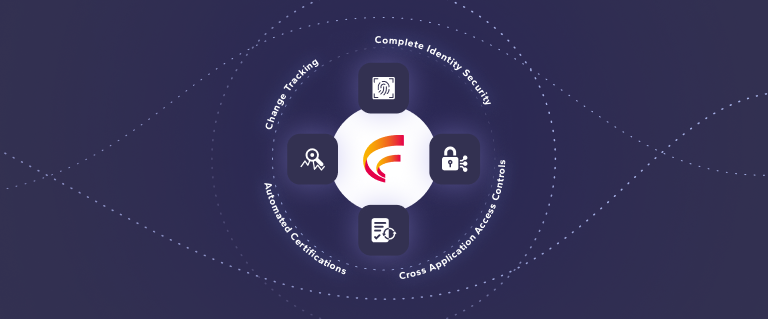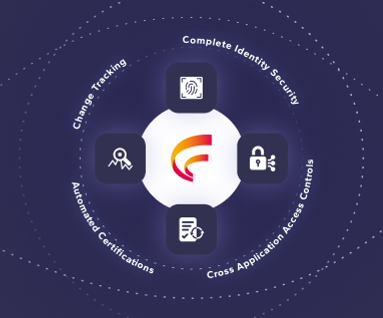Top Tips for Offboarding Employees in the Workplace
By Fastpath
11/10/2022
5min read

Offboarding is the process that leads to the separation between an employee and an organization through resignation, termination or retirement. If done correctly, offboarding ensures that there are no loose ends when an employee leaves the company.
The process reverses the actions you will have put in place when the employee joined the company but arguably it is more important as the risk to business security when someone leaves is a lot higher. Understandably, data integrity and IT permissions will be top of your agenda when you part ways with an employee, but there are also other factors to take into account to make sure the transition is as smooth as possible. Here are some tips to help you plan for offboarding employees in the workplace.
Put it in writing
It is common practise for employees to ask for a face to face meeting when handing in their notice and these days this could just as easily be via a video call. Similarly, disciplinary actions and redundancy discussions are usually carried out in person. However it is important to follow up any face to face meeting by documenting the decisions in writing. If the employee is handing in their notice you should ask them to confirm their resignation in a letter and likewise you should accept their notice in writing. When communicating terminations from an employer’s point of view the same principles apply, you should always back up any verbal communications with written confirmation.
Create a checklist
As soon as an employee announces that they are leaving the workplace, a checklist of actions should be introduced, including everything that is needed from the employee and the wider team up until the day of their departure. These tasks could include returning company equipment, re-allocating tasks temporarily to other team members, final holiday calculations, closing out retirement packages, closing down access to IT systems and much more. After each task is completed this should be noted on the checklist, to help ensure all important tasks are completed, for a streamlined offboarding process.
Plan communications
An employee leaving can be unsettling for the other members of their team, especially if they are moving to a competitor or have been subject to disciplinary action. Planning how, and when, you communicate the departure to your staff is therefore vitally important. Team members may be worried about how the change will affect their workload, and if they worked closely with the leaving employee they may also worry that valuable knowledge will be lost. In addition, if the employee was in a client facing role, you will need to consider how to inform clients, especially if they had a close relationship with the departing staff member.
Assurances as to how the gap will be filled are essential in order to mitigate any potential fall out from staff departures.
Start recruiting a replacement
If the departing employee’s role is essential for your business then finding a replacement will be top of your list of priorities. Sometimes it is possible to redistribute tasks and responsibilities to other members of the team, however if the employee has certain skills that others in the team don’t hold then this won’t be possible. In these cases it is important to recruit someone new as soon as possible in order to avoid the risk of a drop in productivity. Onboarding new recruits in a timely and efficient manner will ensure that continuity is maintained between leavers and joiners so a robust onboarding strategy is essential.
Restrict data as soon as possible
Once an employee leaves an organization, access to all software and data should end immediately. Failure to secure data and systems from offboarding employees creates an opportunity for data theft, which can cause harm to your competitive position. Your IT department should restrict software and email accounts, as well as ensuring that any hardware is returned. It may be the case that action to safeguard data needs to be taken immediately upon resignation. This is often the case when the employee has access to sensitive data and intellectual property that is key to business success. For those in particularly key roles, or in cases where they are moving to a competitor, putting the employee on ‘gardening leave’ may be the best option.
Arrange a detailed handover
Even if you work very closely with an employee, it is important to arrange for a detailed handover as they may undertake tasks you aren’t aware of. If you have already recruited their replacement, a detailed handover document aids in smooth knowledge transfer for the new joiner, picking up where the departing employee left off. The handover should document the employees current tasks, project details, ways of working, locations of knowledge points and how to respond in the event of typical scenarios. If a replacement has yet to be recruited, tasks and responsibilities will need to be temporarily redistributed amongst other team members to ensure service levels remain at the necessary level.
Conduct an exit interview
Exit interviews give an important access to information about employees' thoughts on company culture, processes and ethics. Allowing employees to discuss their perceptions and reasons for leaving before doing so, gives HR professionals a chance to monitor responses and determine any patterns that may appear over time. It is often the case that employees feel they can be more candid after they have handed in their notice, and subsequently they can be a key source of information as to where improvements need to be made.
Make your appreciation known
Finally it is always a nice touch to make sure the departing employee feels appreciated for their contributions during their time with your business. Even if there have been issues along the way it doesn’t hurt to leave on a good note. Treated in the right way, ex-employees can be ambassadors for your business as they progress through their future careers, providing referrals and recommendations. Treating leavers with courtesy and respect during their notice period will pay dividends, not just in easing the employee’s transition, but also in underlining an open and fair company culture.
If you work in an industry where data security is essential, then utilising specialist offboarding software is one way you can make sure that the deprovisioning of access and permissions are handled effectively when somebody leaves. If you want to strengthen your offboarding process, contact Fastpath today.










 (515) 276-1779
(515) 276-1779  (515) 864-0318
(515) 864-0318  info@gofastpath.com
info@gofastpath.com